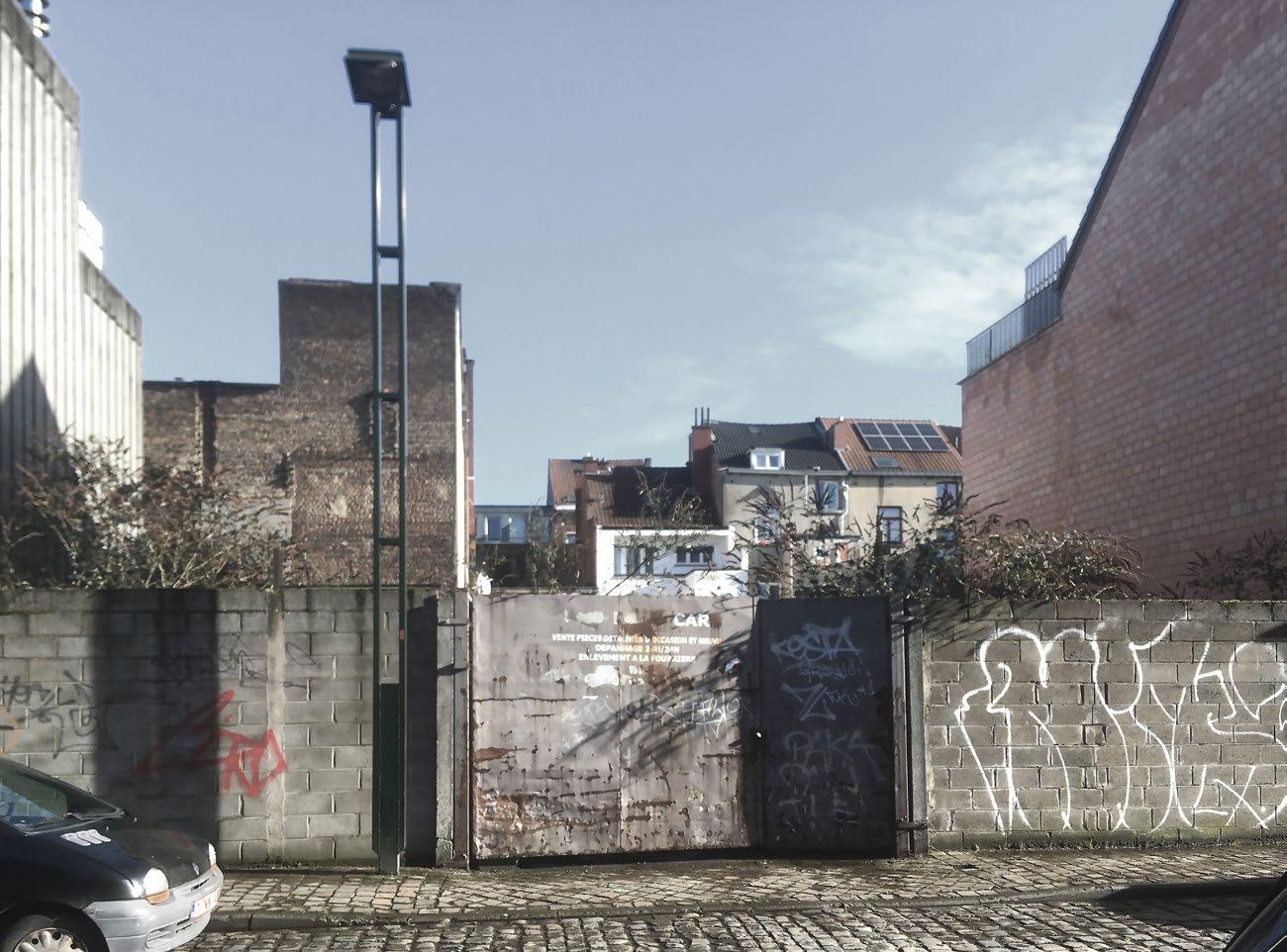
7 minute read
VACANCIES: ISSUES AND OPPORTUNITIES
Vacancy In Brussels
Rising rental prices in our contemporary cities make it harder and harder to find rentable living and working places at an a ffordable price. In Brussels, there are 44,000 households waiting get access to social housing, while living in inadequate conditions and housing insecurity. Controversially, the reason why space is becoming increasingly scarce is not due to the lack of space but to the inaccessibility to it. In Brussels, around 15 - to 30,000 1 of the existing housing units are simply empty, either because of property speculation or because of the owner’s inability to obtain a mortgage to refurbish them and the di fficulties with its maintenance and management.2
Advertisement
Empty plots and buildings trigger another pressing urban issue: devitalization and desolation of the neighbourhood. Vacancies accelerates the decay of the building, increases the feeling of insecurity within its neighbourhood and it is connected to a higher chance for vandalism and crime.
Owning a temporarily unused space involves many inconveniences also for its owner: management costs, municipal taxes, security costs, maintenance works and the regional fine on vacancy. 3
Unfortunately, there is no available data in Brussels about vacant properties. This is a huge problem because one of the major challenges in any temporary land-use project is to figure out the ownership relations. In many cases the property does not show the sign of emptiness for many months, making the available space invisible. Studies suggest, that this could be resolved by the town planning agencies, who have access to up-todate data.4 This task is instead o en conducted by nongovernmental organisations and volunteering citizens, who are in need for a space, and therefore have interest in tracking down and occupying the land even for a shorter period of time, until they find a permanent place for themselves.
Vacancy is an issue a ffecting all cities, however I examined an extreme case in the north-western part of the Northern District in Brussels, that shows significant developments in the last 20 years. In the chosen territory, there were all together 14 empty plots since 2001, om which 4 sites are still unoccupied till this day. In average, these building sites stand unused for around 14 years. Most of the cases they have some temporary functions, such as parking, but in other cases these plots are enclosed parts of the city, remaining as missed opportunities.
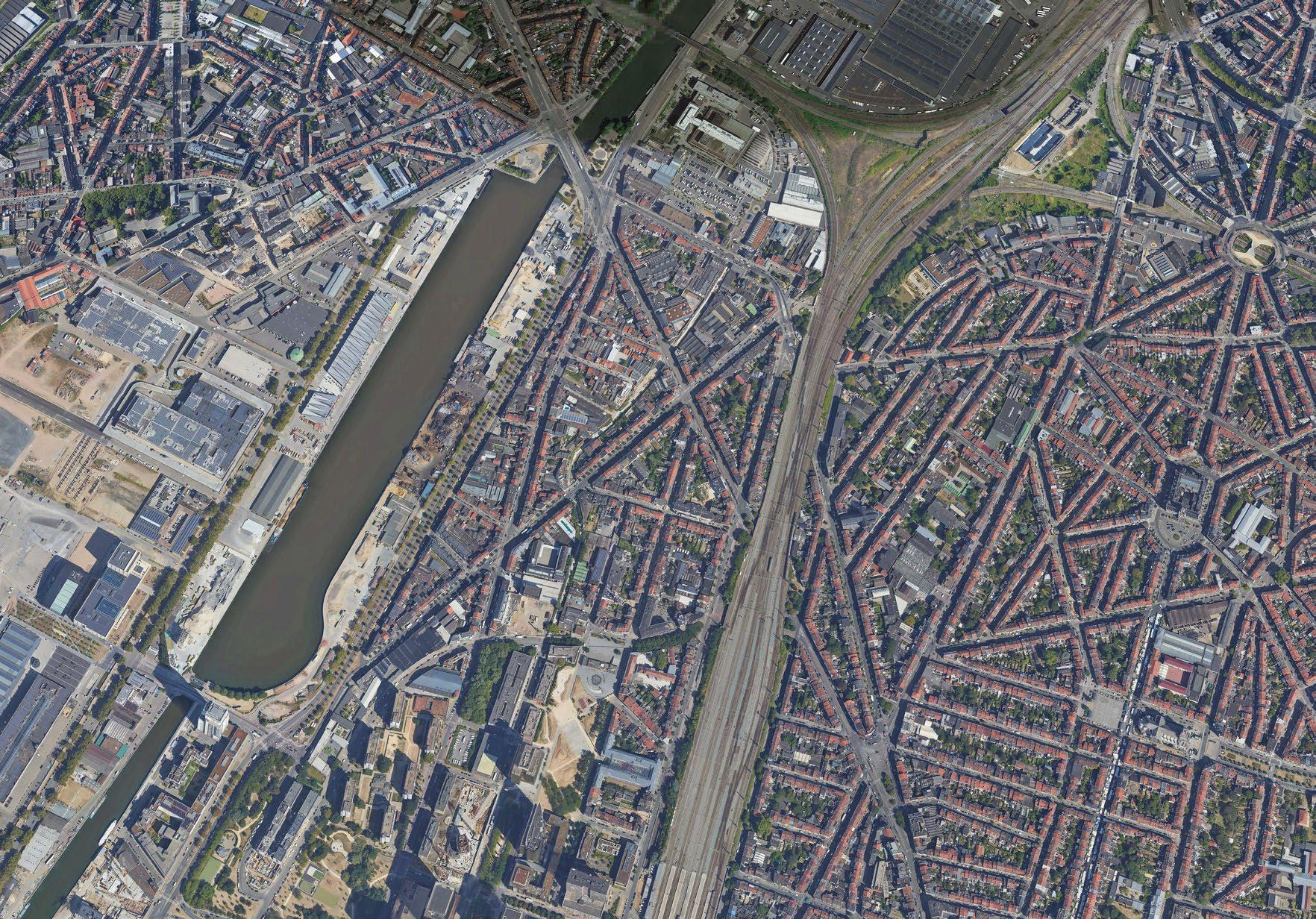

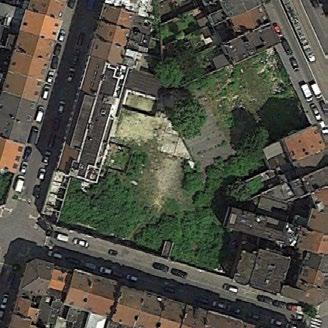

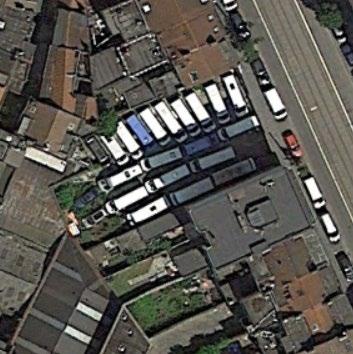

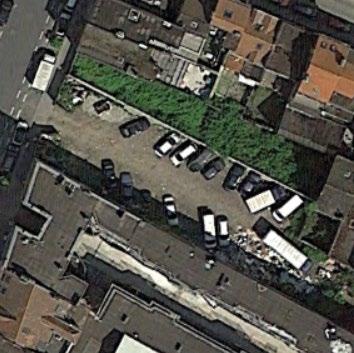

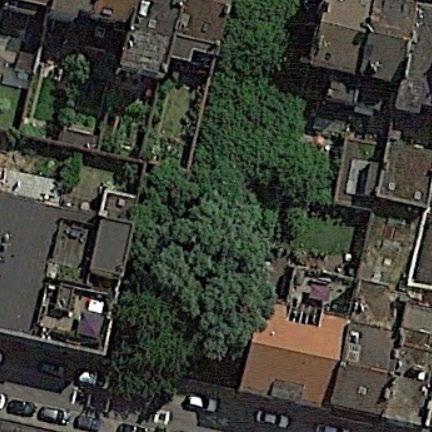

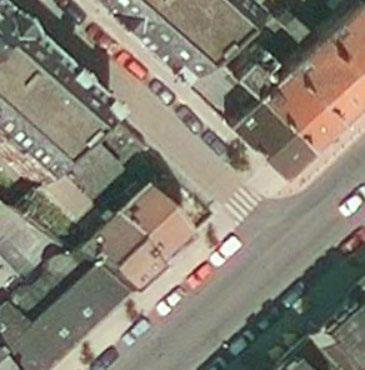


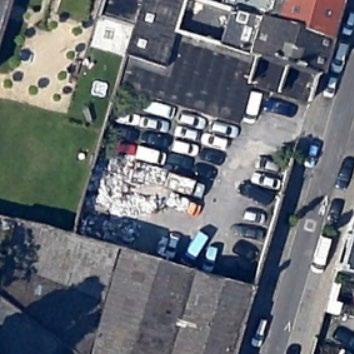

Temporary Use Tactic
Empty properties are also urban resources that offer temporary platforms for alternative use. The term ‘temporary use tactics’ refer to a series of strategies for the temporary use of vacancies in the city that trigger entrepreneurship, fuel creativity, allow experimentation and can be also beneficial for the owner.
Temporary use tactics can be initiated with di fferent aims 5: city planners and policymakers use it as an urban tactic with the long-term aim to revitalise and heal the urban fabric; local bottom-up organisations take advantage of the property as a low rent/ or rent- ee space to accommodate there their neighbourhood activities; artists take over these places to create creative hubs for alternative culture embracing its non-institutional appeal. Unfortunately temporary use, (especially the latter type), o en triggers gentrification within the neighbourhood, making temporary use as an attractive tool for property owners to let other creative initiatives experiment with new ways of usage (artistic and cultural activities), which attracts attention and audience with purchasing power; and consequently increases the value of the property.
A recent study investigating the driving forces behind temporary use points to the political dimension of such aspect in terms of the right to space (especially if the terrain or building is public property), the right of use and the right to a decent housing.6 The temporary use of a space is o en linked to political manifestations,
STAND-IN
- no lasting e ffect
- low impact
CONSOLIDATION
- lasting e ffect on the permanent use
SUBVERSION
- strategic occupation
- to disturb/transform the long-term use
CO-EXISTENCE
- informal temporary use moves to a new place / continues to exist next to the new function such as attention-raising public events and festivals, protests, public disobedience and squatting. In either case, it is important for the occupiers to have long term aims and strategy, so their action leads to positive urban and social change. 7 [ on p. 13]. A long term strategy can be, that the occupiers' suggestions and demands are incorporated into the city planning policies, or that together with the owner they came to an agreement, that is reflected in the future use a er the occupation period is over.[ - ] Lacking strategy, or tactics, the occupation will not have any lasting effect on its urban environment. [ - ].
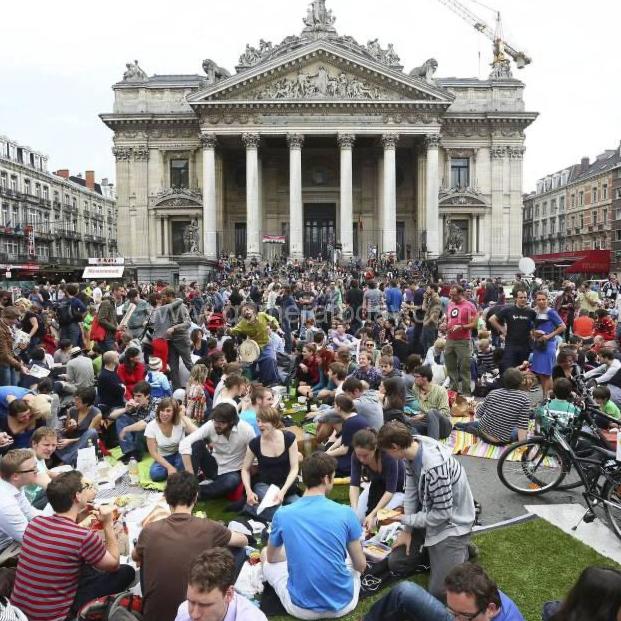
Recognising the positive urban benefits that temporary activities generate, state institutions can support these initiatives both financially or with favourable legislative environment (such as demolishing or lightening anti squat laws.)

These di fferent dependencies between the owner, policymakers (City) and the occupiers (Users) has been classified by Philipp Oswalt, Klaus Overmeyer and Philipp Misselwitz in the book 'Urban Catalyst' 8 in 6 categories: (1) Enable, (2) Initiate, (3) Claim, (4) Coach, (5) Formalise and (6) Exploit. These categories are also illustrated with diagrams on the following page.
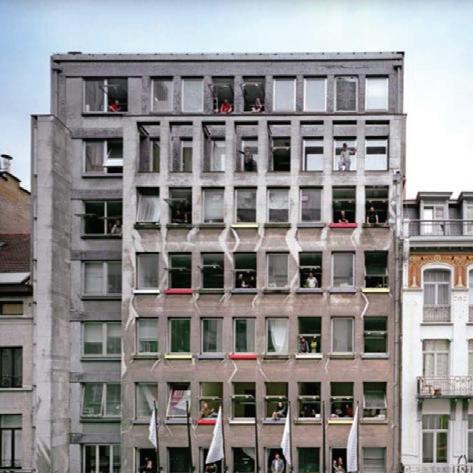
The 1 category (Enable) describes cases when the municipality helps the occupiers (e.g. with special regulations) to come to an agreement with the owner and use the space. An example for this approach is Badeau by Pool is cool, a temporary swimming pool located at the harbour of Brussels in 2016.


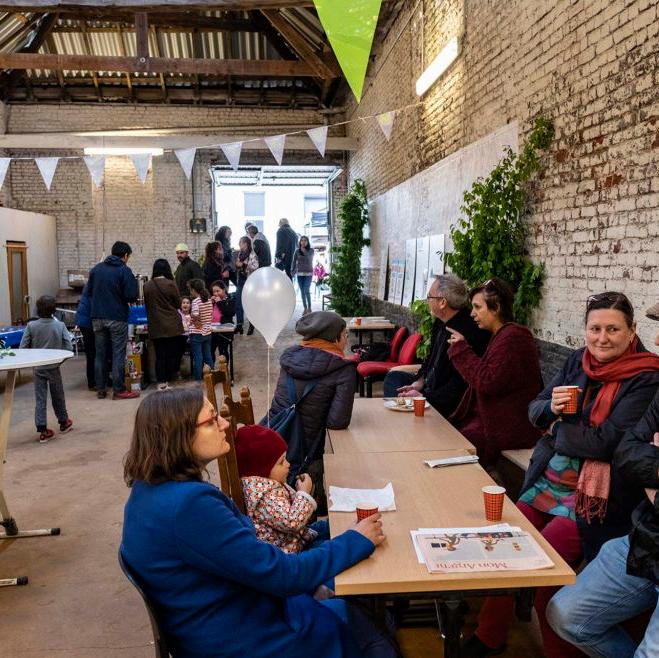
In the 2nd and the 3rd category (Initiate, Coach) a non-profit organisation is commissioned by a governmental organisation to gather possible users and together work out the occupation and negotiation strategy. This is o en the case when the public or semipublic territory have been underused for a while, but the future use has not yet started. Parkfarm at the Tour & Taxis park could be a good example for an Initiate project, while Tiers-Lieux ABC a temporary occupation in Anderlecht on a future CLT Brussels property is a good example for Coaching, where the agent was Communa, a non-profit organisation.
The 4ʰ category (Formalise) collects cases where the temporary occupation is managed on a more and more advanced level in order to become feasible to remain on the terrain as a permanent function.
This di ffers significantly for om the 5ʰ category (Claim), where the occupiers use subversion as a tool to disturb/transform the current use and claim their right to use the space. The PicNic The Streets movement in 2012 started as a citizens initiative, but now become part of the urban plan, while Squat Rue Royal 123 is an example for Claim, an occupying of an empty building as a response to poor housing and inequality.
The 6ʰ category (Exploit) collects all the marketdriven approaches where the main aim is to attract people with purchasing power, foster consumerism and consequently generate gentrification. Pop-up shops/ restaurants, and even flea-markets (though not intentionally) o en contribute to gentrification.
Transitory Town Planning
In times when cities struggle to adapt to the rapid economic and societal changes, in constant uncertainty and when future trends are hard to foresee, transitory town planning offers a viable solution. Transitory town planning means, that the adaptive tactics of the city users are integrated into the planning process, contributing to the creation of more responsive cities.9
Besides financial benefits, temporary use also has a positive effect on its urban environment if it is well planned and executed. However, defining these obstacles is not so easy to pin down, and in most of the cases, studies rather refer to successful experiments as examples, and not so much to rules or guidelines.
'Meanwhile Space', a British organisation working with unused spaces, monitored the local impact of temporary use and found out that the majority of the interviewed people supported the appearance of such functions in their neighbourhood; and felt that they are profiting om the activities happening there.
In many cases, temporary use generated local jobs and helped local entrepreneurs and producers to start, experiment with or expand their business while saving money on lower rents.
The appearance of such new functions and businesses give confidence for the local residents and hope in the further development of their neighbourhood (especially if these new functions emerged in deprived areas.) In less a ffluent areas where more vacant units are available landlords are more willing to offer their properties for a temporary use project since they are less likely to find tenants.
Because of the danger of such project generating the processes of gentrification, careful land management and the involvement of local residents in the project can not be emphasised enough.
If locals are involved and encouraged to actively take part in the formation of their neighbourhood, the temporary function has such a lasting impact on the neighbourhood that is beneficial for the locals. In addition, it gives them a sense of responsibility that proves to be really helpful in the maintenance of the collectively planned development.
Without local involvement, property owners will easily recognise the potential in the temporary use as a tool for attracting the a ffluent classes interested in such creative/alternative milieu; and consequently increase the value of their property.
As outlined while describing the di fferent occupation categories on page 6, the Exploit category can range om unintended gentrification effects (triggered by the creative milieu) to marketing and selling concepts, where time-limit gives a sense of exclusivity, which has a huge appeal amongst consumers.10 This phenomena can be well illustrated by the sudden emergence of pop-up shops and restaurants.
Besides initiating with regulations and loose planning, governments can be also owners and managers of these properties. The process in which the governments [or other non-profit organisations] purchase tax-delinquent, tax reverted, foreclosed or abandoned properties and then convert them into productive and attractive pieces of land in order to "bank" them for future use is called 'Land banking'. 11
These vacant plots can be turned into assets for the neighbourhood by adding missing public functions that previous planning decisions failed to incorporate.
This land management technique is also a great tool to provide a ffordable housing12 while stabilizing and revitalising the declining neighbourhood, either by creating state-owned social housing units or by reselling the homes on an a ffordable price.
Furthermore, such properties could be also sold to non-profit corporations that are initiating alternative ownership models such as the Community Land Trusses. This is also an assurance for the government that the property is in the hands of responsible landowners, minimizing the risk of profit-oriented investments and gentrification.








